Monthly Archives: May 2014
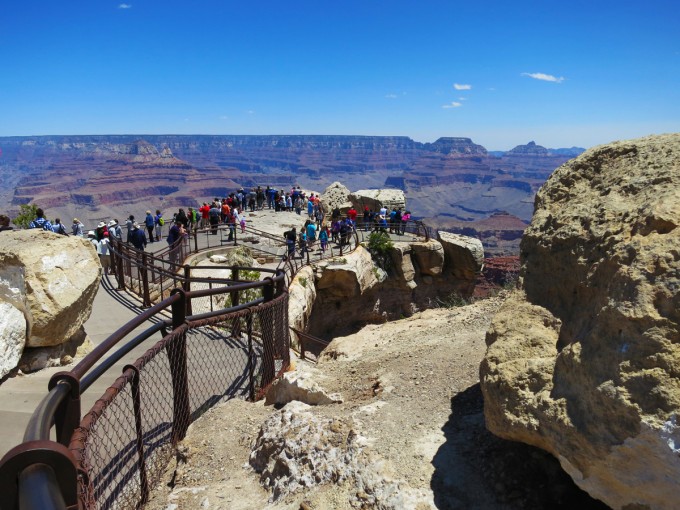
When other canyons dream, perhaps they dream they are the Grand Canyon, located in the state of Arizona in the Southwestern US. From the first peer over the South Rim from the Rim Trail, it felt like my breath left my body. The depth perspective you get from staring into this new world changes one forever.
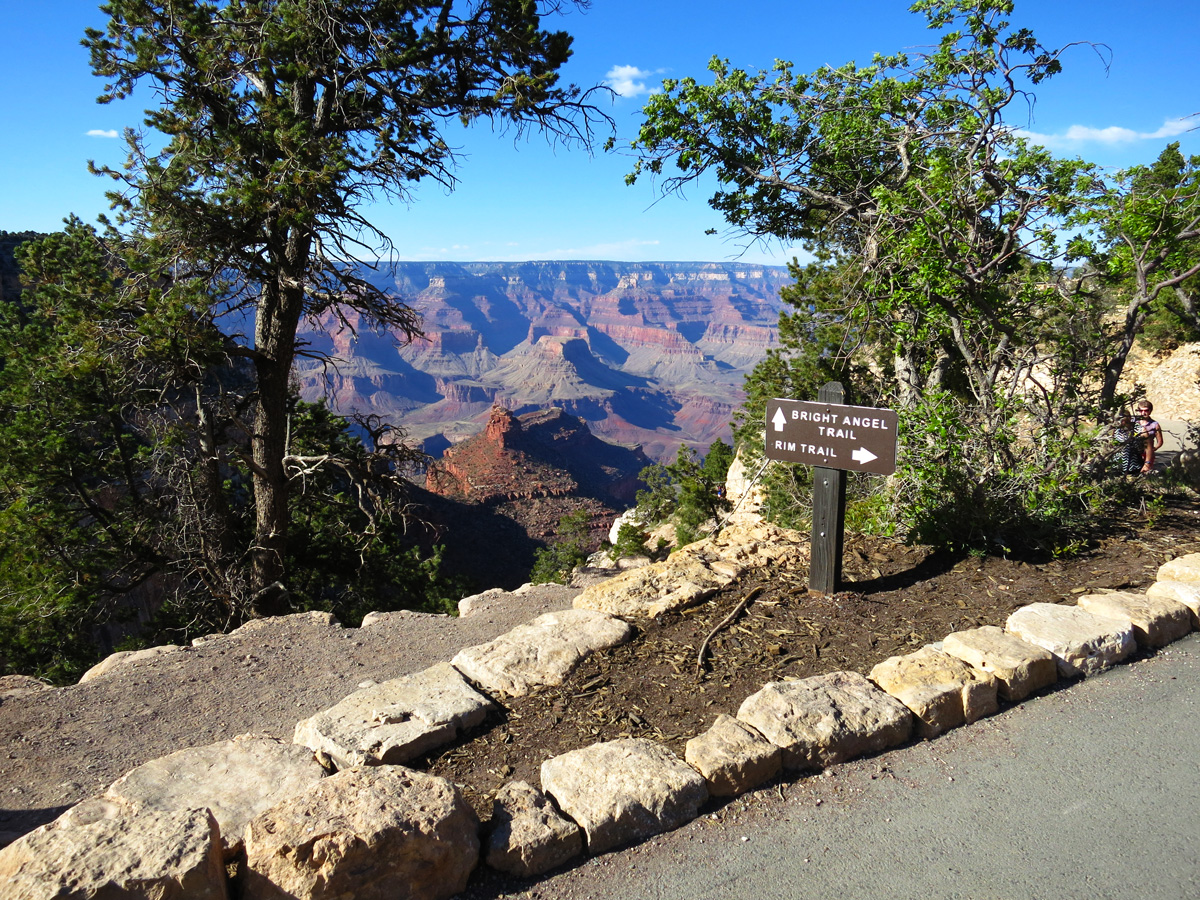
Let me just say this: Pictures don’t do this place justice. This is one of those places on Planet Earth that you just must visit in person to experience it.
That said, do you see the (looks like it’s) tiny house in the next picture, below? This house was the size of a typical small single family home when standing next to it, so that should give at least some perspective about the vastness of this place…
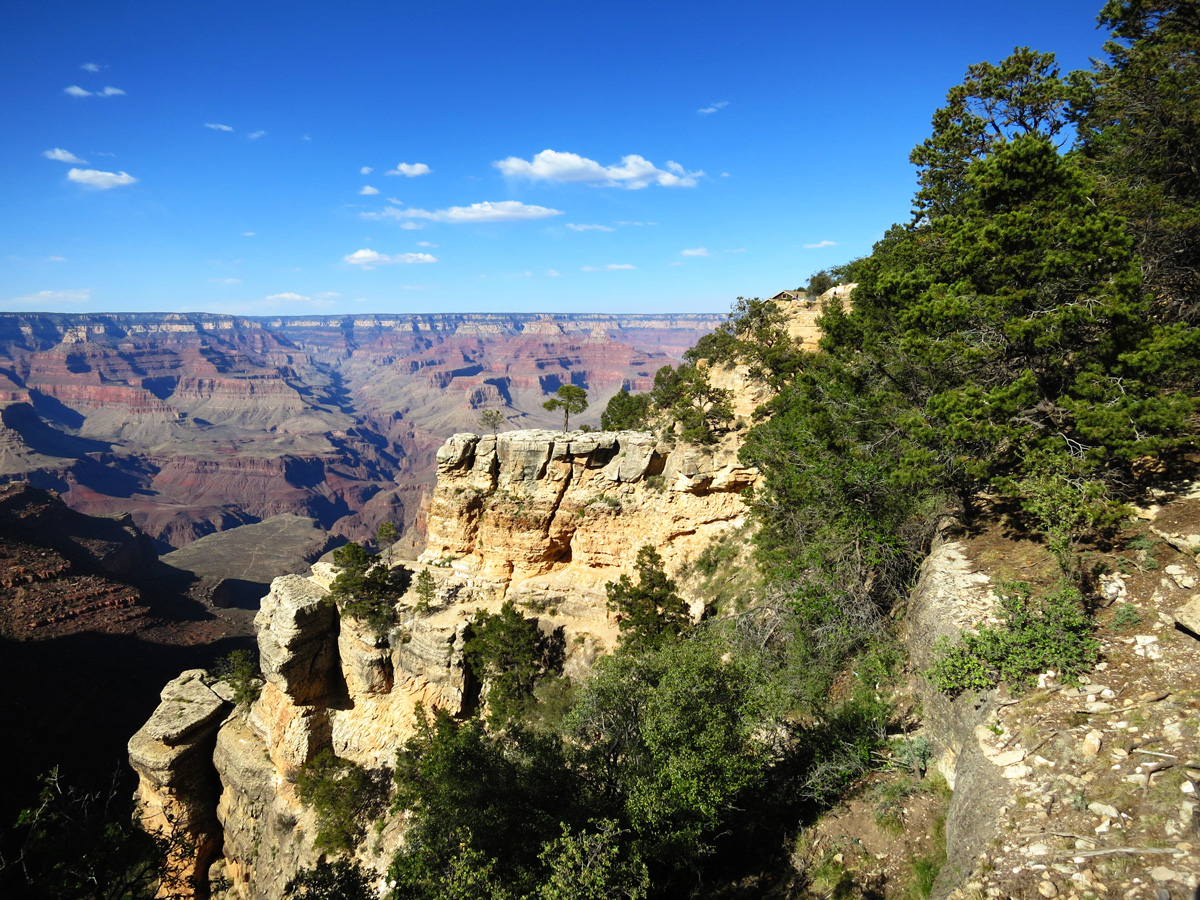
Hiking here is filled with stunning vistas and crisp, fresh air – the kind that’s very rare on planet Earth these days. And yes, the brochures are correct – you’ll need to hydrate and salt often, eat healthy carbs (fruit is good for the electrolytes and sea-salty rice crackers seal the deal), and stay aware of the thin air with its decreased levels of oxygen as compared with lower elevations.
And you’ll also want to mind the edge…in some spots it’s a long way down, but if you need to look, there are safe lookout spots along the trails:
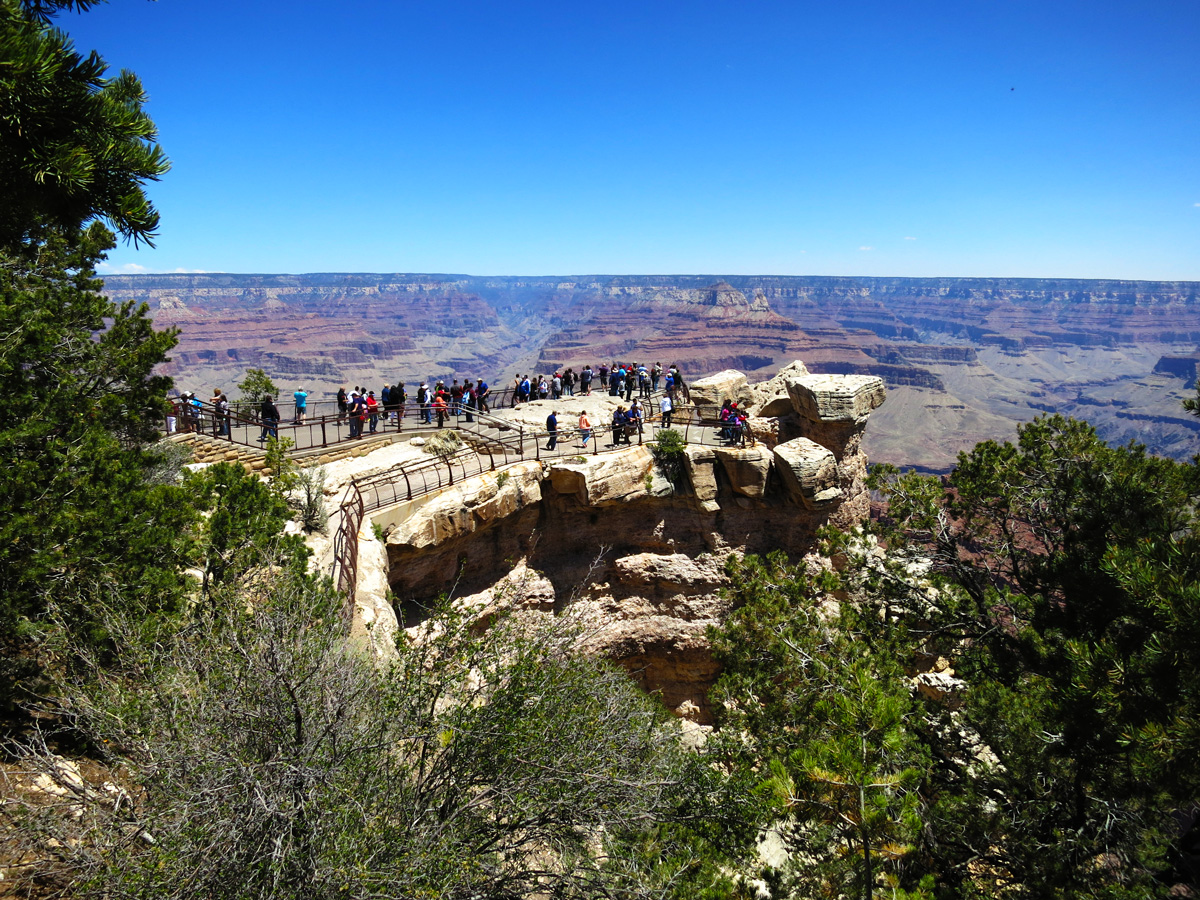
Driving to the Canyon from the south takes one over a desert area so flat that you’d never know a place like this even existed. Soon, you come into a wooded area where the entrance to Grand Canyon National Park is and pay your $25 entry fee (good for seven days as of this writing in May of 2014). Then, the Canyon and all its treasures is your oyster. There are maps…
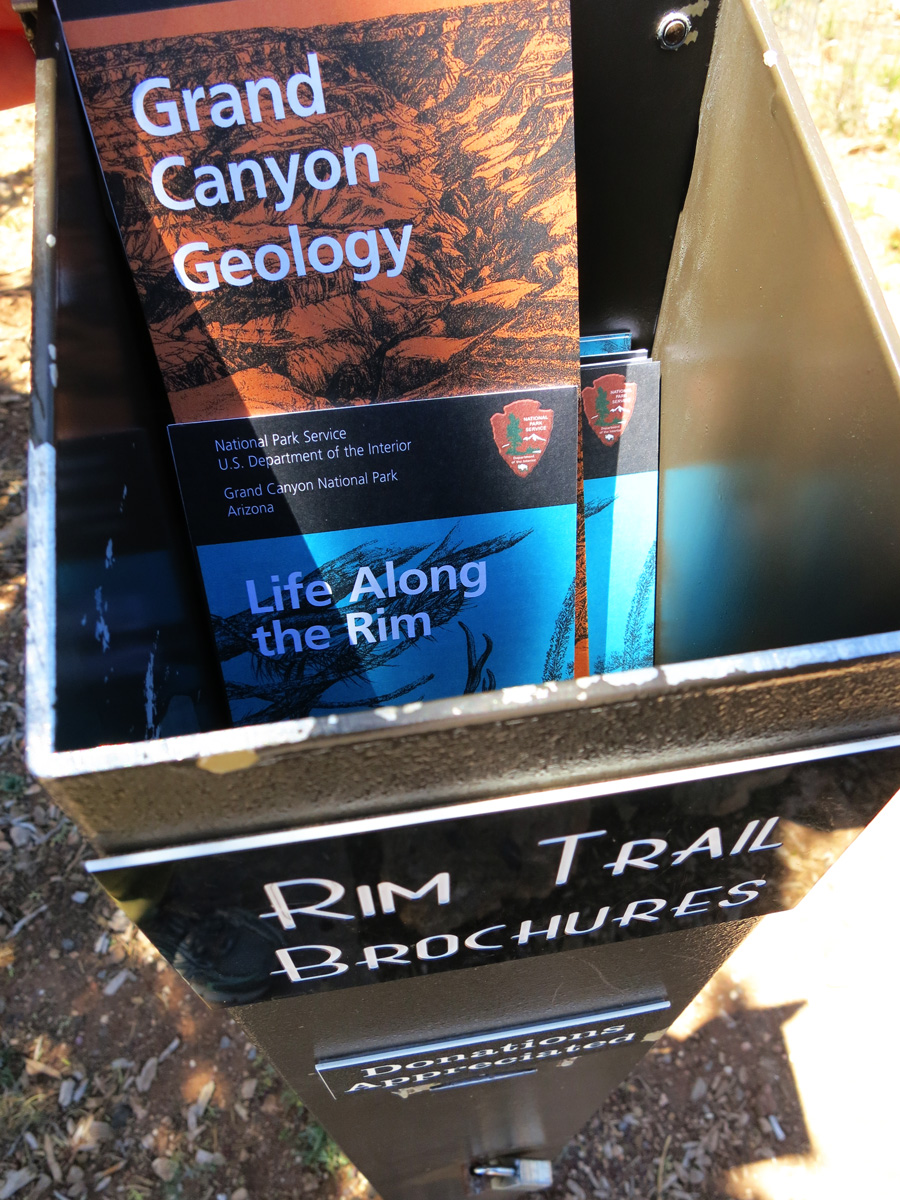
…along with a bus that circles between various points around the Canyon…
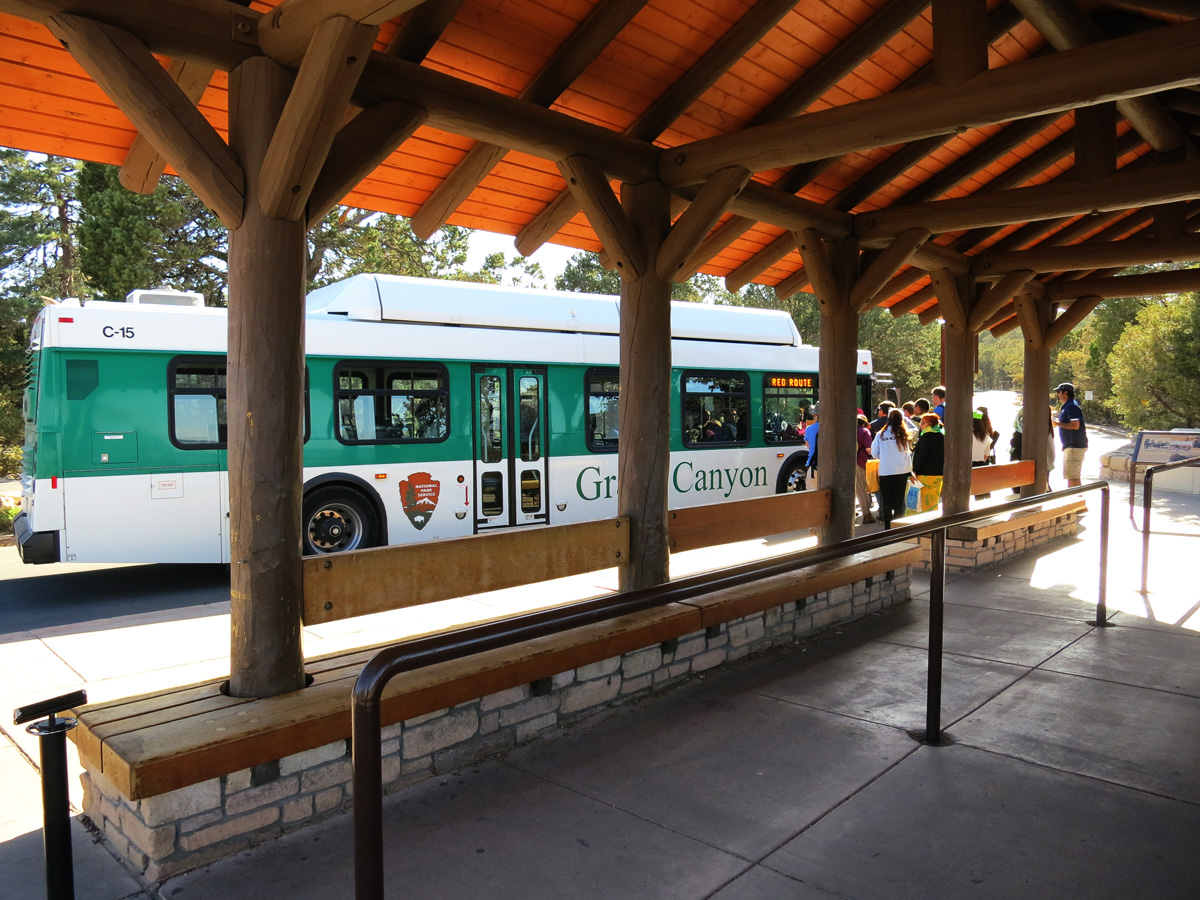
…and cabins right near the rim to sleep in…
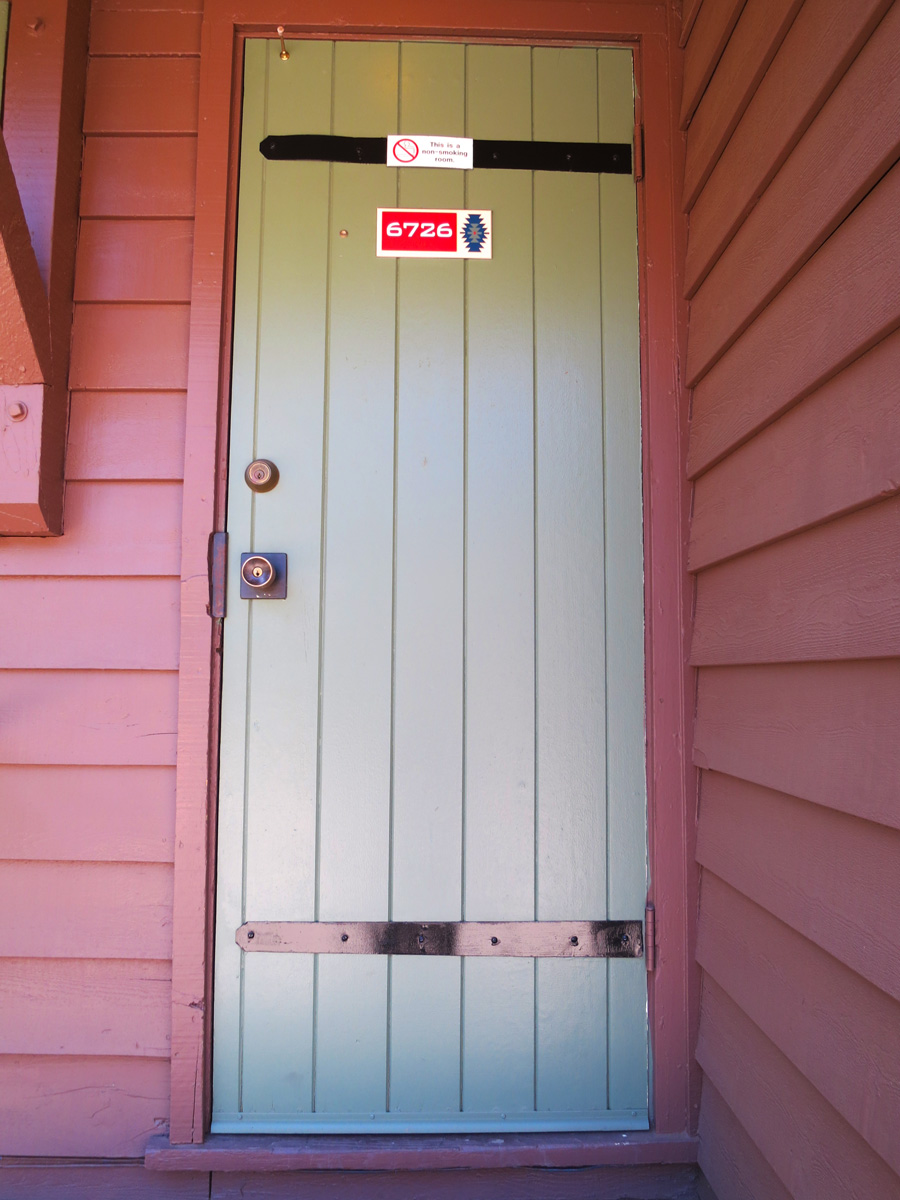
You’ll see some critters along the way, big and small…

…and you’ll see some beautiful things where you least expect them, like this golden-charred wood left over from a forest fire:

…
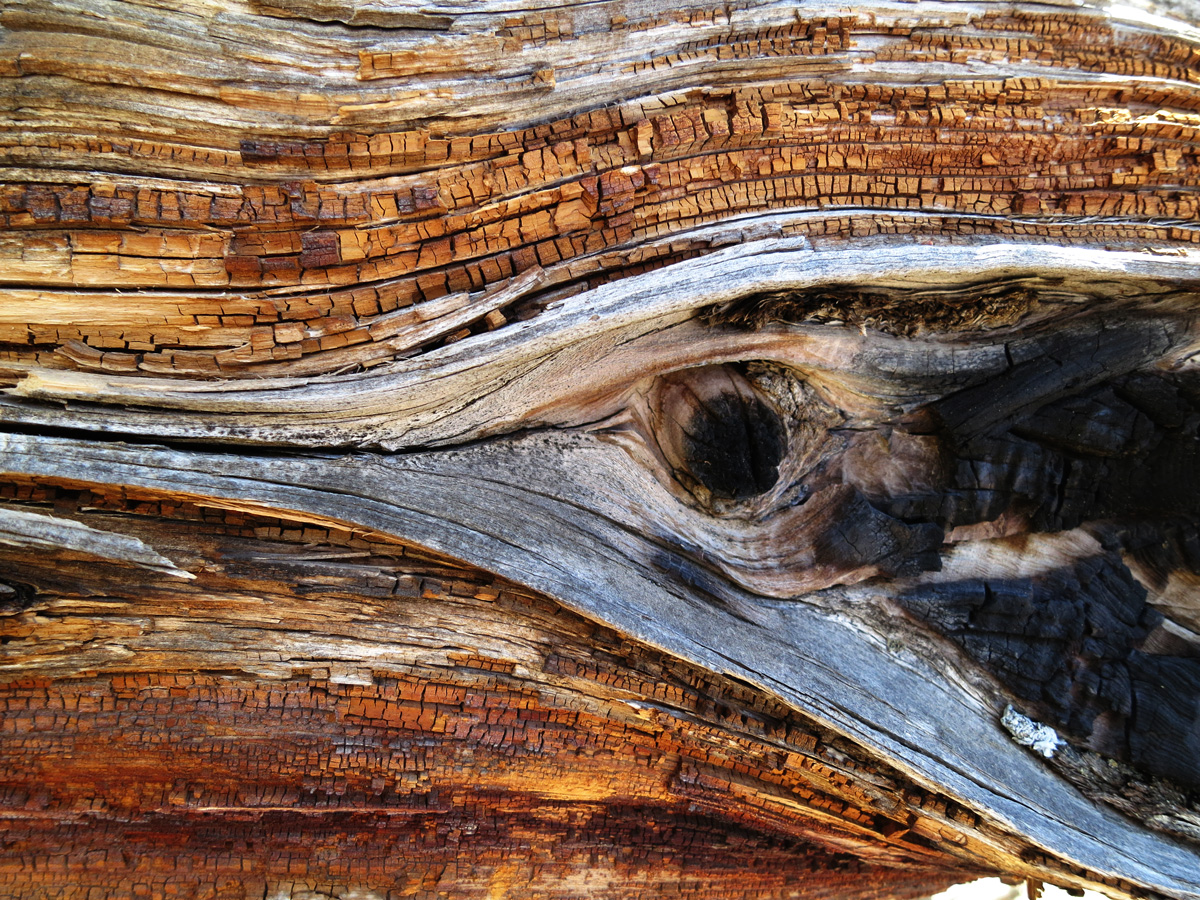
There are so many spectacular vistas that I could spend days over days posting them, but in all honesty, I’d rather be there.
Enjoy!
Click the caption image to the left to see the slideshow with my captions, or click the ![]() at the top right of this page to see what’s behind this content…can you see the tiny house in the pic? It’s about the size of an average little house, which shows you how vast this place is…
at the top right of this page to see what’s behind this content…can you see the tiny house in the pic? It’s about the size of an average little house, which shows you how vast this place is…
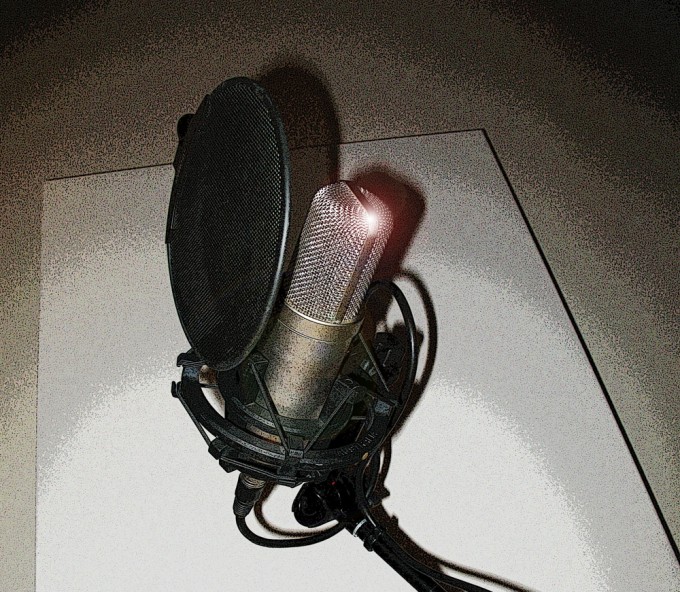
Yesterday, I attended a well-thought out, fact-and-numbers-based lecture given by Dr. Ken Osgood at the Unitarian Universalist Church in Las Vegas, the full title being the following:
The American Health System Dysfunctions – How We Got Here and What Needs To Be Done To Fix It
Speaking as someone with extensive experience with the US Healthcare system’s dysfunctions (and having to pay with no small amounts of money and time to resolve them), this was a presentation I could sink my teeth into where I learned quite a bit.
The lecture’s format traced the last 100 years of the American Healthcare System, how it came about and how it became the monster it is today. At the end, the presenter gave us all practical ways to effect changes in the system itself, starting from the patient’s perspective (i.e, the way it should be, but not the way it currently is). The message I got loud and clear: the system originated with us, and it has only grown out of control with our permission.
During the lecture, I learned that in America, we almost had a single-payer system. Nearly 100 years ago in 1920, a vote on a national healthcare system – akin to those in Europe and other nations – failed by a count of six votes.
If I could go back in time, no tellin’ what I’d do.
Flash forward to 1945 and a World War II-winning US, defined by a highly-skilled workforce that US industry could not afford to compensate accordingly and voila! We got socked with our employer-based healthcare system, with employer healthcare benefits coming in as an alternative to reasonable pay. Following that in 1965 came the introduction of the “third wheel” between patient and provider in the form of the fiscal intermediary concept. At the time, this included Medicare and Medicaid and has grown to include insurance companies, lawyers, courts, legislators (and legislation), hospital systems and others all grabbing at pieces of the big pie.
Here are some of the results of too many fingers in that pie, the figures shocking, but not surprising:
- 23% of the insurance premium payments you spend your hard-earned dollars on go to nothing more than processing money.
- Doctors in the 1970s saw patients for 10 minutes or more per visit. It is currently down to two minutes. (I’ll note here that the doctor whose wrong prescription for antibiotics in my case saw me for all of two minutes – and it was these two minutes that changed my life forever. A simple gram negative/gram positive test was indicated, but not done.)
- Per Dr. Osgood, if the US Healthcare System worked well, it would consume less than 8% of the US Gross Domestic Product. It is currently at 19+%.
I’ll let you do the math on that last one as to how much of our GDP is simply attributable to health-related corruption and waste.
There are also structural issues preventing effective healthcare delivery – one, too many hospital beds, and two, too many physicians. From the presentation:
- The current number of hospital beds-to-population ratio is 3/1000, while less than 2/1000 is the actual need level.
- The current physician-to-population ratio is 220/100,000, while Kaiser Permanente’s model produces better than average outcomes at 125/100,000.
Using deductive logic, is it any wonder we are so damn marketed to in this country over healthcare? There is too much of a supposedly good thing, but somehow less of a real choice for all of us, so when I say the system is rigged (and this is my fallback expression regarding US Sick’n’Pay), there are the facts to back it up.
Dr. Osgood’s lecture concluded with the concept of a Medical Home – that is, a single-point-of-entry system for patients with features including continuity along with patient-centered, comprehensive and compassionate care. And importantly, one that doesn’t divide (and therefore fracture) its delivery system among so many entities that it makes it difficult to establish a qualitative, long-term relationship with a caring, ethical and well-educated healthcare practitioner where trust can be built.
This brought his final point home: that it is up to us to insist on what we need from doctors and from the system. Namely that We the People need to forge that long-term relationship with a good provider, and minimize the use of urgent care, hospitals and others as much as possible, in other words, put the family physician back where he or she belongs.
We need to be writing down all our questions (and insisting they are all answered while on a visit). And we’d be wise to have an advocate along for the ride when we deal with the system (I always bring someone along to doctor’s and other medical visits just so I have a witness). And I’ll chime in here with my usual: doctors as guides, not gods, with treatment options covering the whole spectrum, not just what’s promoted by Big Pharma.
All in all, this was one of the more memorable lectures I’ve seen on this subject matter, and it was delivered with care by Dr. Osgood, who actually had the audacity to apologize to me for the system after I told him my story.
Yours in Good Health,
Alison

